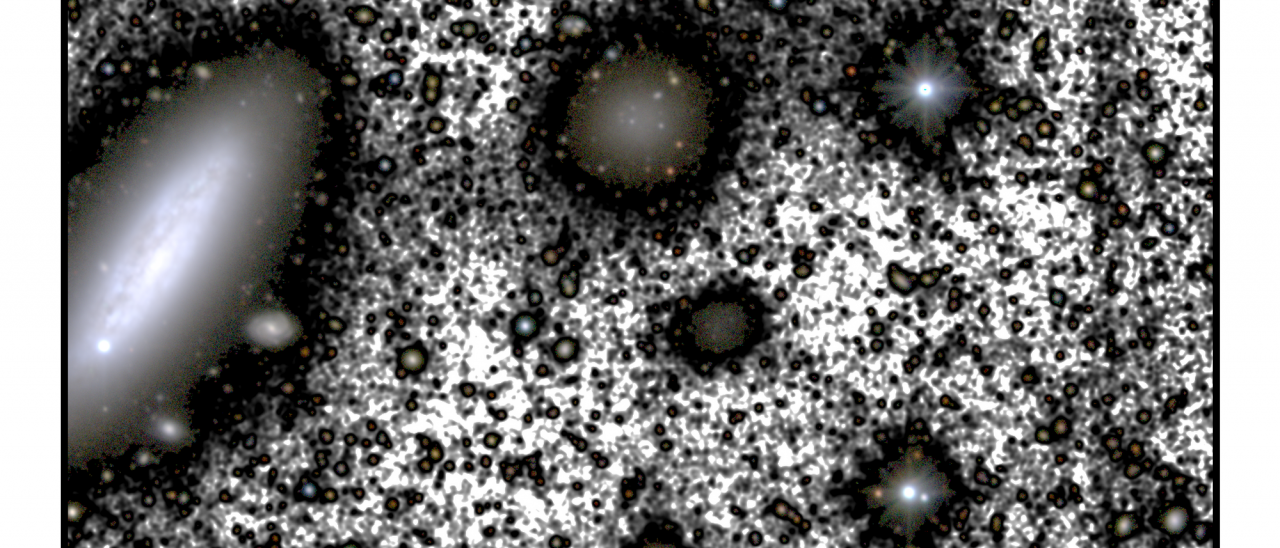The small fraction of dark matter in the galaxy NGC1052-DF4 has worried the astronomical community for several years. Now a team of researchers from the Instituto de Astrofísica de Canarias (IAAC) the University of La Laguna (ULL) the University of New South Wales, the Insituto de Astrofísica de Andalucia, and NASA’S Ames Research Center have found a mechnism which can esplain it. This finding, which is to be published in the scientific journal The Astrophysical Journal, manages to make this phenomenon fit with accepted models of formation and evolution of galaxies.
Astronomers were not able to explain the lack of dark matter in the galaxy NGC1052-DF4 without violating accepted cosmological models. While in this type of ancient galaxies the stella mass usually makes up only 1% of the dark matter, in this case it had been observed that dark matter is less than 50% of the mass. But finally the mystery has been solved.
The astronomers have detected strong changes in the distribution of the material in NGC1052-DF4 due to tides caused by the interaction of a massive neighbouring galaxy: NGC1935.
According to this study, massive galactic systems can interact gravitationally with their neighbour galaxies, changing their structure strongly, and even destroying them.
These forces first affect the dark matter “because the stars are more concentrated and are affected later, when almost all the dark matter has been eliminated” explains Mireia Montes, an astrophysicist who took her doctorate at the IAC, and who has led the research from the University of New South Wales, in Australia.
What we observe is similar to what occurs on Earth due to the Moon’s graviational pull. “The mechanism was known previously but it had not been observed in this type of galaxies where the stellar density is extremely low” notes Ignacio Trujillo, an astrophysicist at the IAC and one of the authors of the article.
“And this is just what this study has managed to do “to detect characteristics which are 1000 times fainter than the night sky visible from the ground, in galaxies which are 65 million lihg years away” adds Trujillo.
This type of research is known as “Low surface brightness science” and to obtain the images those involved have made a very careful observation with the Hubble Space Telescope, the Gran Telescopio Canarias (GTC) at the Roque de los Muchachos Observatory (Garafía, La Palma) and at the IAC-80 telescope, at the Teide Observatory (Izaña, Tenerife). But no in the traditional way.
Although astronomers usually work with exposure times of order half an hour, this work needed images with 60 hours of exposre which is “pretty complicated” we are assured by Raúl Infante-Sainz, who specializes in low surface brightness regions, and is another of those involved at the IAC. As well as needing these very long time exposures needed to reach the very low stellar surface densities, afterwards “we need to reduce the data satisfactorily so as to obtain the low surface brightness structures which are hidden below the noise levels in the original images.
This very careful research explains the relative absence of dark matter in NGC1052-DF4, and in a way which is consistent with the models of formation and evolution of galaxies which are most widely accepated in the international astronomical community.
Article:
Mireia Montes, Raúl Infante-Sainz, Alberto Madrigal-Aguado, Javier Román, Mateo Monelli, Alejandro S. Borlaff e Ignacio Trujillo. “The Galaxy ‘missing dark matter’ NGC1052-DF4 is undergoing tidal disruption”. 2020, The Astrophysical Journal. DOI:
Arxiv: https://arxiv.org/abs/2010.09719
APJ: https://iopscience.iop.org/journal/0004-637X
First author:
Mireia Montes: mireia.montes.quiles [at] gmail.com (mireia[dot]montes[dot]quiles[at]gmail[dot]com)
Contact at IAC:
Ignacio Trujillo: itc [at] iac.es (itc[at]iac[dot]es)
Raúl Infante-Sainz: infantesainz [at] gmail.com (infantesainz[at]gmail[dot]com)



